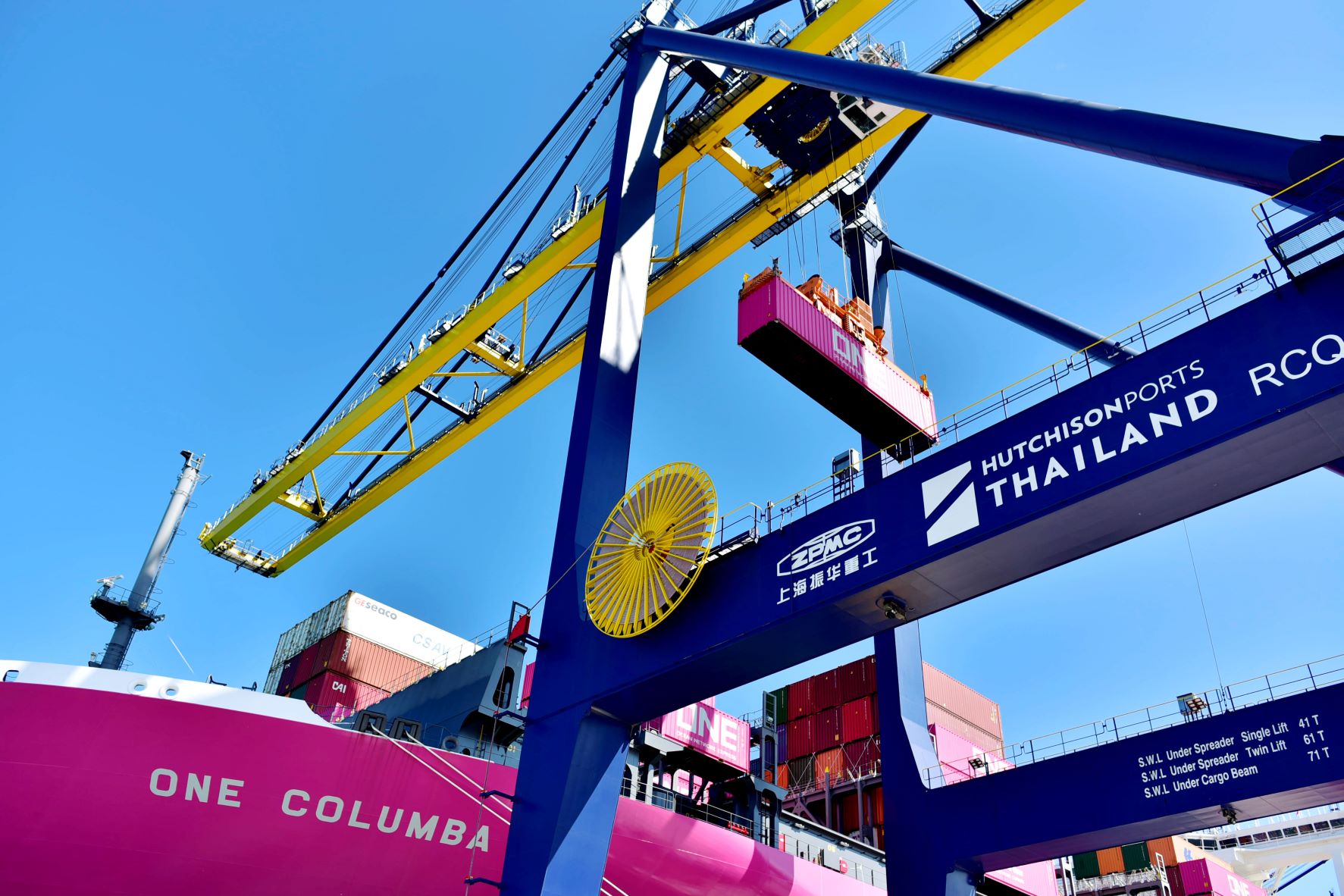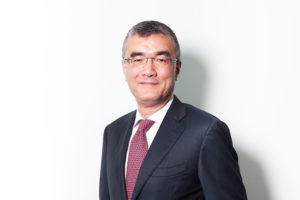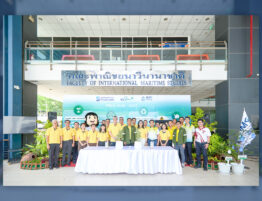
Hutchison Ports Thailand celebrated the long-anticipated official opening of Terminal D at Laem Chabang Port on January 30, 2019. The milestone was more than a symbolic launch; it was also a historic one for Thailand and the world as a whole. Terminal D is the first container terminal in the world to have all of its ship-to-shore quay cranes (QCs) and rubber tyred gantry yard cranes (RTGCs) operated using remote control technology.
The launch event on January 30th marked the commencement of full operations of an initial 400 meters of berth at Terminal D. Currently equipped with 3 remote control QCs and 10 remote control RTGCs, this initial phase of Terminal D gives a glimpse into the future of the fully operational terminal. Stephen Ashworth, Hutchison Ports’ Managing Director of Thailand & South East Asia, notes, “By the end of this year, you’ll have a fully operational first phase of the terminal with 1,000 meters of berth, 6 QCs and 20 RTGCs – all operated using remote control.”
On full completion, Terminal D will comprise 1,700 meters of deep-water berth, 17 remote control QCs and 43 remote control RTGCs and will be capable of handling some of the largest ocean-going container vessels currently being deployed.
The Push for Innovation
In speaking with Mr. Ashworth, we learned why Hutchison Ports chose Terminal D for this new technology. Mr. Ashworth enumerated the three vital motivating factors – improvements in safety, environmental sustainability, and operational efficiencies.
First and foremost, Hutchison Ports strives to be a leader in the industry and takes the safety of their staff and the cargo entrusted to their terminals across the globe, very seriously. Mr. Ashworth noted that, in the past, the accident rate in general at its existing conventional terminals at Laem Chabang Port was higher than they prefer, due in part to the manual nature of the operations and the ever-increasing demand for improved commercial productivity. He continued, “With these cranes at Terminal D, you have all the anti-collision features installed with the associated sensor and CCTV technology, so the advanced technologies have been brought in to help eliminate any crane related safety concerns.”
On the environmental front, remote control cranes are generally more sustainable than their conventional counterparts. Over the last decade, a significant initiative of Hutchison Ports has been improving its environmental footprint and investing in sustainable technologies. The deployment of electrically operated remote-control cranes at Terminal D inevitably will lead to a significant reduction in carbon emissions and noise levels.

In an effort to streamline processes and increase operational productivity, automation ranks superior to manual operations. For example, a remote-control QC can handle 30 or more moves per hour which is about 20% higher than for a conventionally operated QC. As such, the remote-control QCs were a “no brainer” when the operations planners and engineers were designing Terminal D.
The automation of Terminal D was not, however, a cost-cutting measure. On the contrary, as Mr. Ashworth pointed out, it is marginally more expensive to operate a semi-automated terminal in Thailand than it is to pay for the equivalent hours of manpower: “it is not an exercise in cost-cutting because actually, for Hutchison Ports Thailand, the advantages you get from deploying remote control cranes far outweigh the incremental cost of the technology.”
Mr. Ashworth went on to note an important reason why Hutchison Ports Thailand chose Terminal D for innovation was the footprint itself – the blank canvas allowed for full customization to suit the business needs of the shipping lines. Mr. Ashworth noted that in Thailand the trend continues toward deploying larger vessels which therefore necessitates larger QCs to accommodate.
It is certainly a lot more challenging to retrofit an existing terminal’s conventional operations and this largely explains why Hutchison Ports Thailand has no plans to duplicate the Terminal D model to its existing Terminals A2, A3, C1 and C2 at Laem Chabang Port. These terminals will continue “as is” as conventional operations primarily handling smaller container vessels.
Future Focused Investment
Terminal D represents an innovation not yet seen in Thailand, or across the globe, underscoring Hutchison Ports’ push towards future-focused innovations. Mr. Ashworth states, “This is a long-term play in Terminal D. We’re aware that many analysts are saying that the global economy may slow down soon, but this is about looking at the future and investing in that. We are immensely proud of what we’ve done here.”
Hutchison Ports’ pride is warranted. Not only is this a first terminal of its kind, but also it represents an investment in providing its shipping line partners with the best service the industry offers. Mr. Ashworth states: “There is no question that our cranes are capable of handling this generation’s vessels. Our 24 container wide QCs, which are among the largest in the world, enable you to get right across to the boxes stacked on the far side of the vessel. And for the foreseeable future, I don’t think shipping lines will deploy vessels larger than the 14,000 TEU class vessels currently calling at Terminal D which means that Terminal D will be capable of meeting the ever-increasing demands of our shipping line customers for quite some time to come.”
Another important consideration in the push for innovation was the safety and well-being of the employees, namely the remote-control QC and RTGC operators. Mr. Ashworth notes, “I’ll tell you who are really happy – the operators. It’s like an office environment in the centralized remote-control center located above the Terminal D gate house. It’s more comfortable, and they seem happy with the environment but those of them who are also qualified conventional crane operators readily accept also taking a shift at our existing conventional terminals at Laem Chabang Port. This reflects the professional attitude of our people”
Terminal D’s official launch on January 30 represents a new chapter for Hutchison Ports Thailand, Laem Chabang Port and for the country as a whole. Moreover, as Mr. Ashworth noted, this is merely phase one of the innovation to come.








